So, you've decided it's time to get rid of the clutter in your home and life. Maybe you've decided to launch a "campaign" something like my "1000 things" in which you plan in a certain period of time to eliminate all the excess from your home. Or maybe you are planning on a more little-by-little approach. Either is fine. Both will work, if you keep at it. But the question that is often in our minds is "Where does it end?" Will there come a time when there is no more clutter, and I don't have to declutter anymore?
Well, yes and no. If you stop bringing more stuff in and keep working at it, then yes, you can get to a point where your house is (mostly) free from excess. But, without continuing effort, it won't stay that way for long!
If you live with other people. If you ever bring something new home. If you have friends who send you gifts. If you read magazines or do puzzles. If you buy any item that comes with packaging. If you lose or gain weight, or your kids grow. In other words, if you live life!....clutter will happen!
But it does not have to become that overwhelming, all consuming monster it once was, ever again. The secret to preventing that from happening is some new habits and routines, such as these:
1. Quick maintenance - after you've decluttered a space or a room, you need to sweep through it from time to time, quickly removing any new items of clutter that may have been deposited there. This may just be part of your regular housework routines - as you tidy, dust or vacuum, pick up and deal with unnecessary items as you go.
2. Regular deeper sessions - once a week or once a month, go back through one cupboard, drawer, shelf, room - whatever works for you - and check to make sure nothing there has become outdated, outsized, worn out, or no longer needed. If so, eliminate! If you've already decluttered thoroughly, and you keep doing this regularly, it won't take anywhere near as long to do as the first time!
3. Have a place to put stuff you don't need easily, and use it - to me this means a bin in the foyer for recyclables, a bag in a handy cupboard for clothes to pass on, and an accessible box for things headed to the thrift store. As soon as the bag or box fills, or once every week or two, take those items out to the car and make a point of dropping them off when you go into town.
4. Teach your kids good habits and thought patterns - it's ok to let go of stuff you don't need any more, where to put such things, and to think about where they are going to keep anything new they bring home (is there room, do they really need it, what will they get rid of when they add this?)
5. Adjust your own thoughts and habits too! Do I REALLY need this? And remember, it's ok to pass something on as soon as you've finished using it. Just because that was a good magazine, doesn't mean you need to keep it forever! Don't allow yourself to just bring random things home - it needs to be something you need or truly want, and there needs to be a place for it.
A good rule-of-thumb is to take 15 mins every day to move through your home looking for and getting rid of clutter.
Well, yes and no. If you stop bringing more stuff in and keep working at it, then yes, you can get to a point where your house is (mostly) free from excess. But, without continuing effort, it won't stay that way for long!
If you live with other people. If you ever bring something new home. If you have friends who send you gifts. If you read magazines or do puzzles. If you buy any item that comes with packaging. If you lose or gain weight, or your kids grow. In other words, if you live life!....clutter will happen!
But it does not have to become that overwhelming, all consuming monster it once was, ever again. The secret to preventing that from happening is some new habits and routines, such as these:
1. Quick maintenance - after you've decluttered a space or a room, you need to sweep through it from time to time, quickly removing any new items of clutter that may have been deposited there. This may just be part of your regular housework routines - as you tidy, dust or vacuum, pick up and deal with unnecessary items as you go.
2. Regular deeper sessions - once a week or once a month, go back through one cupboard, drawer, shelf, room - whatever works for you - and check to make sure nothing there has become outdated, outsized, worn out, or no longer needed. If so, eliminate! If you've already decluttered thoroughly, and you keep doing this regularly, it won't take anywhere near as long to do as the first time!
3. Have a place to put stuff you don't need easily, and use it - to me this means a bin in the foyer for recyclables, a bag in a handy cupboard for clothes to pass on, and an accessible box for things headed to the thrift store. As soon as the bag or box fills, or once every week or two, take those items out to the car and make a point of dropping them off when you go into town.
4. Teach your kids good habits and thought patterns - it's ok to let go of stuff you don't need any more, where to put such things, and to think about where they are going to keep anything new they bring home (is there room, do they really need it, what will they get rid of when they add this?)
5. Adjust your own thoughts and habits too! Do I REALLY need this? And remember, it's ok to pass something on as soon as you've finished using it. Just because that was a good magazine, doesn't mean you need to keep it forever! Don't allow yourself to just bring random things home - it needs to be something you need or truly want, and there needs to be a place for it.
A good rule-of-thumb is to take 15 mins every day to move through your home looking for and getting rid of clutter.
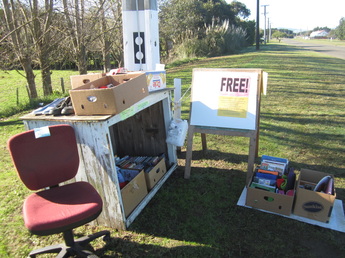
Last week we finally had a nice, sunny day, and I was able to put my collected items out by the road. I put out about 7 boxes of stuff, and 5 hours later when I packed the rest up, there was only 1.5 boxes worth left.
Since then, I've done a little more decluttering, but I've decided it's time to wrap up my 1000 Things campaign - after all, I've exceeded that goal, and there are other things in life that need my greater focus right now.
In the past week, I've added another 58 items to my give aways - including clothing, jigsaws, a radio, binder, wastebasket, crockpot, muzzle, craft things and more, and added a couple more items of furniture to the sell list.
Due to the fact we're now into wintery weather, it's no longer practical for me to put things out by the road, so all remaining items are going to be dropped off to a local charity tomorrow, and I'm going to focus over the next couple of weeks on advertising and selling the remaining books etc I've earmarked for sale. If they don't sell by then, they will also go to the charity.
As I've now decluttered all the rooms in my house, as well as a couple of sheds, I feel pretty good about what I've accomplished. There are more books and DVDs that will go in time, but most of those will be for sale, and there's no point pulling them off the shelves until I've cleared away the ones already for sale.
I also need to spend some time catching up on some other projects - finishing setting up my new paperwork system, catching up on ironing and mending, and so on - these things and more may be the subject of future blog posts.
All in all, despite the fact that eliminating 1000 things seemed like a huge goal, I've got rid of over 1200 items over the last 6 weeks or so, and while my house looks less cluttered, it certainly doesn't look empty! My family are amazed that we could let so much go and not even notice the difference in any negative way - a fact that has inspired them to keep letting go of more of their own stuff!
I hope you've enjoyed my 1000 Things campaign, and have been inspired to let go of some of your own excess!
Since then, I've done a little more decluttering, but I've decided it's time to wrap up my 1000 Things campaign - after all, I've exceeded that goal, and there are other things in life that need my greater focus right now.
In the past week, I've added another 58 items to my give aways - including clothing, jigsaws, a radio, binder, wastebasket, crockpot, muzzle, craft things and more, and added a couple more items of furniture to the sell list.
Due to the fact we're now into wintery weather, it's no longer practical for me to put things out by the road, so all remaining items are going to be dropped off to a local charity tomorrow, and I'm going to focus over the next couple of weeks on advertising and selling the remaining books etc I've earmarked for sale. If they don't sell by then, they will also go to the charity.
As I've now decluttered all the rooms in my house, as well as a couple of sheds, I feel pretty good about what I've accomplished. There are more books and DVDs that will go in time, but most of those will be for sale, and there's no point pulling them off the shelves until I've cleared away the ones already for sale.
I also need to spend some time catching up on some other projects - finishing setting up my new paperwork system, catching up on ironing and mending, and so on - these things and more may be the subject of future blog posts.
All in all, despite the fact that eliminating 1000 things seemed like a huge goal, I've got rid of over 1200 items over the last 6 weeks or so, and while my house looks less cluttered, it certainly doesn't look empty! My family are amazed that we could let so much go and not even notice the difference in any negative way - a fact that has inspired them to keep letting go of more of their own stuff!
I hope you've enjoyed my 1000 Things campaign, and have been inspired to let go of some of your own excess!
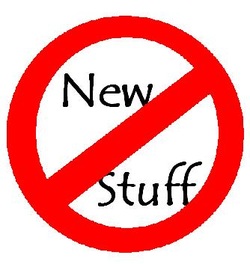
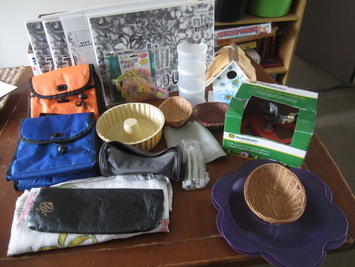
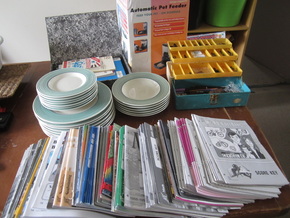
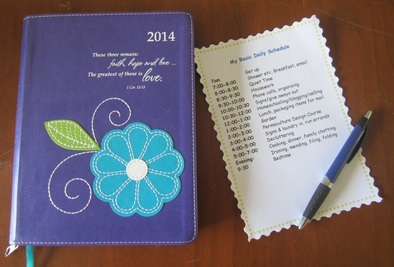
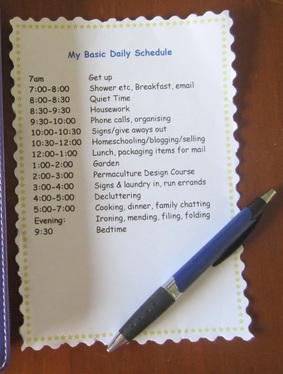
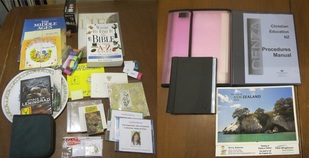
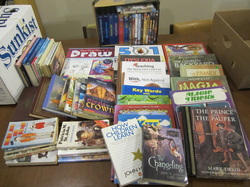
 RSS Feed
RSS Feed
